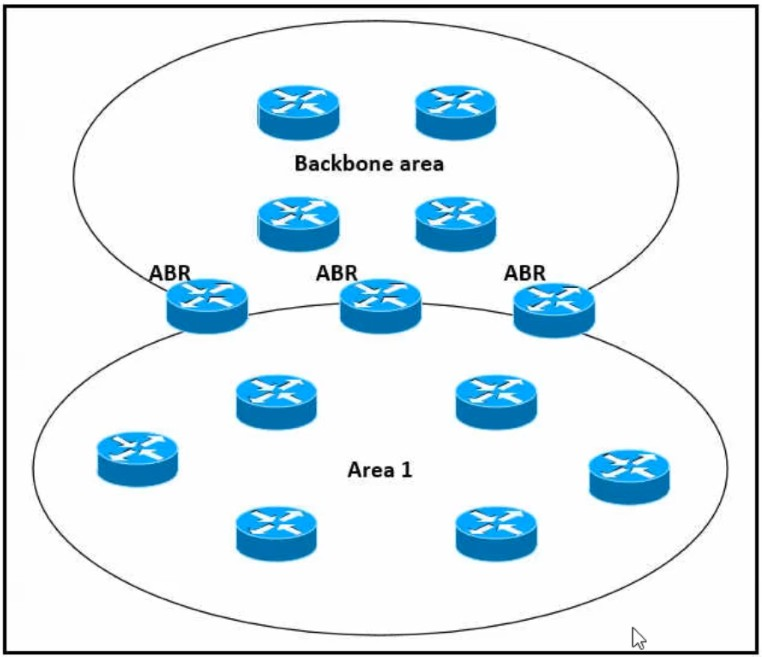
Refer to the exhibit. Which impact of using three or more ABRs between the backbone area and area 1 is true?

Refer to the exhibit. Which impact of using three or more ABRs between the backbone area and area 1 is true?
In a large-scale network, having multiple Area Border Routers (ABRs) can indeed cause serious scalability issues due to the Link State Advertisement (LSA) replication and flooding. Each ABR will receive LSAs from the non-backbone area (Area 1 in this case) and then advertise them to the backbone area (Area 0). With an increase in the number of ABRs, the same LSAs will be replicated multiple times, increasing the overall amount of LSA traffic in the backbone area, which can overwhelm the network and lead to degradation in performance. Therefore, option D is correct.
When there are multiple ABRs between the backbone area (Area 0) and area 1, each ABR will receive LSAs (Link State Advertisements) from area 1 and replicate them to the backbone area. This replication process can result in increased LSAs flooding and processing in the backbone area, leading to scalability issues. As the network scales and more ABRs are added, the number of LSAs being replicated and flooded throughout the backbone area increases, potentially overwhelming the routers and causing performance degradation. It is important to carefully consider the number of ABRs and the resulting LSA replication to ensure efficient and scalable operation of the OSPF (Open Shortest Path First) network.
Every ABR will inject external LSA for the same network, that means multiple LSAs for same route that will lead to increase memory and computational requirement.